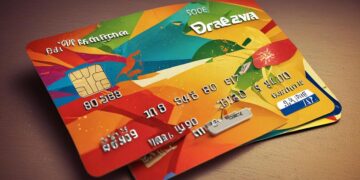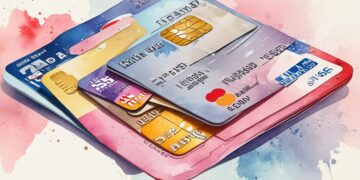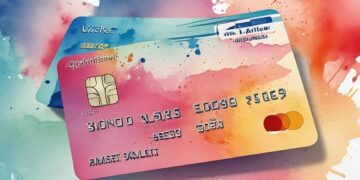Difference between secured and unsecured credit cards in the USA

Understanding Credit Cards
As we navigate the complexities of personal finance, credit cards emerge as pivotal tools that not only facilitate purchases but also provide a pathway to financial empowerment. With their inherent convenience and adaptability, they can be tailored to fit various financial landscapes. Among the diverse range of credit cards available, secured and unsecured cards stand out as the primary options, each designed for distinct consumer needs and credit standings. A closer examination of these card types can offer invaluable insights for making informed financial choices.
Secured Credit Cards
Secured credit cards operate on the premise of collateralization. When applying for one, users are required to make a cash deposit, typically matching their desired credit limit. This feature not only instills a sense of responsibility among users but also minimizes risks for lenders. Here are some essential aspects:
- Deposit Requirement: The collateral deposit mitigates the lender’s risk, thus making secured cards an attractive option for individuals with limited credit history. For instance, if one has saved $500, they could often qualify for a $500 credit limit.
- Credit Building: Secured cards serve as a launching pad for those aiming to build or repair their credit. Consistent, timely payments can gradually improve credit scores, opening doors to better financial products in the future.
- Lower Approval Qualifications: For many, secured cards represent a financial lifeline. They are particularly beneficial for applicants with less than stellar credit ratings, as they possess significantly less stringent criteria than traditional credit cards.
Unsecured Credit Cards
In contrast, unsecured credit cards allow consumers to access credit without requiring a cash deposit, making them ideal for those with established credit histories. These cards possess unique characteristics that cater to a different segment of the market:
- No Deposit: With an unsecured card, the credit limit is primarily based on the individual’s creditworthiness and history, often rewarding responsible borrowers with higher limits.
- Rewards Programs: Many unsecured cards come with enticing incentives, such as cash back on purchases, points redeemable for travel, or exclusive discounts. These perks can significantly add value for consumers who can manage their credit responsibly.
- Higher Risk: However, it’s important to note that these cards usually necessitate a good to excellent credit score for approval. This exclusion can be discouraging for many, but it rewards those who have demonstrated financial responsibility over time.
Understanding the fundamental differences between secured and unsecured credit cards is crucial for anyone seeking to navigate the financial landscape effectively. Whether your goal is to build credit or leverage a flexible payment solution, aligning the right card with your financial objectives can open up new avenues. In exploring these options, consumers can make smarter, informed decisions that can lead to improved financial health and expanded opportunities.
CHECK OUT: Click here to explore more
Choosing Between Secured and Unsecured Credit Cards
As individuals embark on their financial journeys, understanding the distinction between secured and unsecured credit cards is vital. The differences between these two types of credit cards are not merely academic; they can significantly impact your financial health and borrowing power. By grasping these differences, consumers can better align their credit choices with their unique financial situations and goals.
Applications and Accessibility
One of the most notable differences in applying for secured versus unsecured credit cards revolves around accessibility and approval rates. Secured credit cards are generally more accessible to a broader demographic, especially those with little to no credit history or a previous history of financial missteps. Here’s how the application process typically unfolds:
- Simple Approval Process: Secured cards often feel more welcoming because they focus more on the initial deposit than on credit scores. Therefore, individuals who might struggle with traditional credit card applications due to past, negative credit behaviors can easily qualify as long as they can make the necessary deposit.
- Increased Acceptance: Even if you have a low credit score or are new to credit, secured card issuers often provide a second chance. This feature has made them a popular option for young adults entering the credit market or individuals looking to rebuild their financial reputation.
On the other hand, unsecured credit cards pose their own set of challenges when it comes to obtaining approval. So, what makes them different?
- Credit Score Requirements: Unsecured cards typically necessitate a good to excellent credit score, making it crucial for potential applicants to have demonstrated strong financial habits in order to qualify. Consumers with healthy credit scores will find themselves readily welcomed into this category.
- Potential for Rewards: While unsecured cards often have higher eligibility requirements, they frequently come with additional benefits that can enhance user experience, such as cash-back rewards or travel perks. These incentives can be particularly appealing to those who regularly pay off their credit card balances in full.
Ultimately, the choice between a secured and an unsecured credit card should consider both your financial history and your future goals. While secured cards provide a pathway for building or rebuilding credit, unsecured cards can offer enticing rewards and conveniences for those with established credit. Engaging with both options can provide an understanding of your personal financial landscape, and help guide smart decisions that lead to enhanced credit opportunities.
CHECK OUT: Click here to explore more
Understanding the Costs and Fees
Another crucial aspect to consider when differentiating between secured and unsecured credit cards is the cost associated with each type. While many consumers may initially overlook the importance of fees, understanding the financial implications can help users make informed choices regarding their credit options.
Fees Associated with Secured Credit Cards
Secured credit cards often require an upfront cash deposit that typically serves as your credit limit. While this deposit makes secured cards easier to obtain, it can also be structured with various fees:
- Annual Fees: Many secured cards come with annual fees, which can range significantly depending on the issuer. For example, some cards may charge as little as $25, while others can exceed $100 annually. It’s important to weigh these fees against the potential benefits of the card.
- Transaction Fees: Some secured cards may impose fees on foreign transactions, which can amount to 1% to 3% of each purchase made abroad. For frequent travelers, this is a key consideration that can add up quickly.
In addition, cardholders need to remember that missing payments can lead to penalties and loss of deposits, further complicating the cost structure associated with secured cards.
Fees Associated with Unsecured Credit Cards
In contrast, unsecured credit cards often present different fee structures:
- Rewards Programs: Many unsecured cards include rewards programs that come with no additional fees. These rewards can translate to significant savings or perks if utilized wisely, making them attractive for regular spenders who pay their balance in full each month.
- Higher Annual Fees: Although there are unsecured cards with no annual fee, many premium options come with higher fees, sometimes reaching upwards of $500 for cards with extensive travel benefits or exclusive perks.
- Lower Interest Rates: While interest rates can vary, unsecured cards may offer more favorable rates for consumers with good credit ratings. This can save money over time for those who occasionally carry a balance.
Both secured and unsecured credit cards offer different paths to balance management, which is essential for avoiding debt. Evaluating these costs is crucial as the financial burden of credit can vary significantly depending on the type of card selected. Understanding how fees interplay with credit management can impact long-term financial health.
The Impact on Credit Scores
Understanding how secured and unsecured credit cards affect your credit scores is paramount for anyone using credit in the USA. Credit scoring models, such as FICO, heavily weigh your payment history and the utilization of credit, factors that are impacted by both types of cards.
Secured Credit Cards and Credit Building
Using a secured credit card responsibly can provide a viable path for credit building. Here’s how:
- Establishing Payment History: Making on-time payments on a secured card can significantly boost your credit score over time, as payment history accounts for a large percentage of the credit scoring formula. This consistent behavior reflects positively on reports.
- Improving Credit Utilization: By keeping your usage below 30% of your credit limit, you can enhance your credit utilization ratio, crucial for establishing a strong credit profile.
Unsecured Credit Cards and Credit Optimization
For those with existing credit, unsecured credit cards offer opportunities beyond mere credit building:
- Diverse Credit Mix: It’s often viewed favorably when you have a mix of credit types. Adding an unsecured credit card to your profile can enhance your credit mix, which is another factor credit scoring models consider.
- Potential for Credit Limit Increases: Many unsecured cards provide periodic reviews of your account and can automatically increase your credit limit when you demonstrate responsible behaviors, further boosting your credit score.
Ultimately, recognizing how secured and unsecured cards impact your credit score can empower consumers to make decisions that foster a healthy financial future. Whether you’re attempting to build your credit from scratch or looking to optimize an established score, understanding these nuances can help you navigate your financial landscape effectively.
CHECK OUT: Click here to explore more
Choosing the Right Card for Your Financial Journey
In conclusion, the distinction between secured and unsecured credit cards in the USA offers consumers essential options tailored to their financial needs and credit situations. Secured credit cards serve as a stepping stone for individuals looking to build or rebuild their credit history, facilitating steady growth through responsible use. They are often accessible for those with limited credit history or lower credit scores, despite the necessity of an initial deposit and potential fees.
On the other hand, unsecured credit cards cater to those who possess established credit. These cards typically provide more robust rewards programs and lower interest rates, making them attractive for consumers who can manage their balances and enjoy the benefits of credit wisely. The potential for credit limit increases and opportunities for a diverse credit mix also make unsecured cards appealing for optimizing one’s credit score.
As you consider the potential benefits and drawbacks associated with each card type, it’s crucial to analyze your financial goals, spending habits, and overall credit situation. Understanding the cost structures, fees, and impacts on your credit score will allow you to make informed financial decisions. Ultimately, whether opting for a secured card as a beginner or choosing an unsecured card to enjoy rewards and benefits, comprehensive knowledge can enhance your credit profile and pave the way for future financial opportunities.
So take the time to compare various offerings, weigh your options, and consider reaching out to financial professionals or resources to ensure that your choice aligns with your long-term financial aspirations. The right credit card can serve not just as a tool for purchases, but as a cornerstone of your financial journey.






